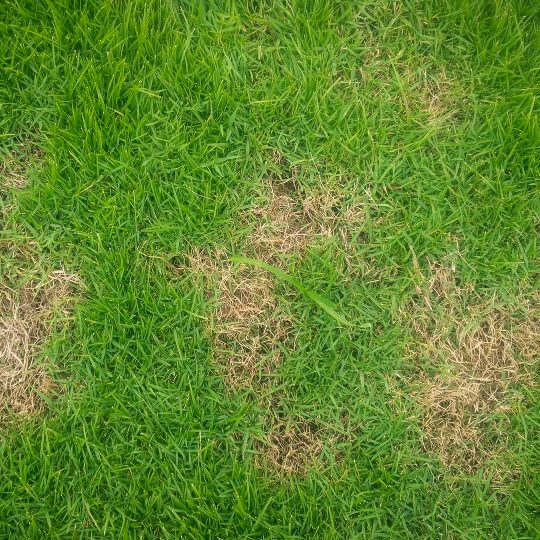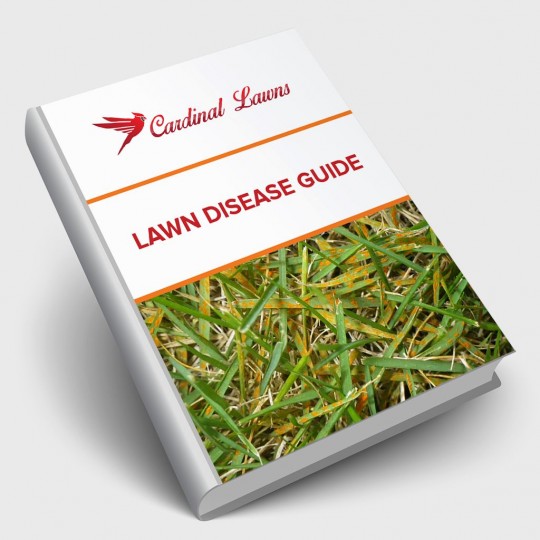Type of Winter Lawn Disease
And How to Deal
Posted
November 4, 2021

There are many things to do to prepare for winter, for yourself and your lawn. While you’re breaking out the sweaters and jackets, you can help protect your lawn from various types of winter lawn disease.
Different Types of Winter Lawn Disease
Did you know that many diseases thought to happen during the winter are caused by poor conditions in the fall or spring? There are even ways to help prevent snow mold before winter sets in. The key is determining what type of grass you have and taking steps to strengthen it during the growing season.
Once the freezing temperatures hit, fungi aren’t as active. It’s the weather conditions before and after the dormant season that you need to worry about. This is the time of transitional weather. Warm days and cold nights create an unstable environment that makes plants more susceptible to disease.
While you can’t control the weather or the temperature, there are things you can do to help your plants stand up to disease.
- Determine what type of grass you have. Warm-season and cool-season grasses are prone to different diseases.
- Learn the signs and symptoms of diseases likely to attack your grass.
- Start disease prevention methods in the transitional seasons: fall and spring.
While proper maintenance may not guarantee your grass survives brutal conditions, it’s not for lack of trying. On the flip side, the grass is likely to recover from some diseases, like red thread and snow mold. It may not look pretty in the process, but there’s still reason to hope.
Grass Disease Prevention
There are things you can do to help strengthen your grass. While these things are important for all grasses, it’s even more helpful if you’ve dealt with certain lawn diseases before. You know what to watch out for, and hopefully how to prevent a repeat breakout. The timing of when and how much to rely on these preventative measures depends on the grass and climate.
- Fertilization. There is such thing as too much of a good thing. Go easy on the fertilizer and know which season is best for application depending on the type of grass you have.
- Fungicides. Make sure you know what specific disease you’re fighting and only use chemicals when necessary.
- Fall cleanup. Clear the lawn of leaves and other debris. A build-up of too much matter, even if it’s organic, becomes a breeding ground for disease.
- Mowing. Continue to mow your lawn until it stops actively growing. Mowing can also help break down the leaves and other natural debris on your grass, turning it into a healthy fertilizer.
Disease Treatment by Grass Type
If you’ve done what you can to properly maintain your grass, but you still see signs of disease, here are some strategies to use for your specific grass type.
Cool-season grasses: two of the common cold weather diseases are pink snow mold and red thread. Signs of the disease include discolored blades and spotty dark patches on your lawn. Help prevent these diseases by not mowing your grass too short and stressing it out. One of the best treatment options is to allow the grass to repair itself.
Warm-season grasses: a common disease is known as large patch, and it’s as it sounds, brown patches that start small and expand to several feet in diameter. Fungicide treatment could help, but so could not over-fertilizing or watering too much.
Local Lawn Control
Since preventing and treating lawn disease relies heavily on knowing the type of grass you have, it’s best to get a professional to help identify the variety. Contact Cardinal Lawns for more information on treating the type of grass in your yard.

Download Your FREE Lawn Disease Guide
Even the most manicured landscapes are susceptible to lawn disease. Take some time to learn about identification and removal before one takes over your lawn. This handy guide teaches you how to spot common lawn diseases as well as how to properly treat them.